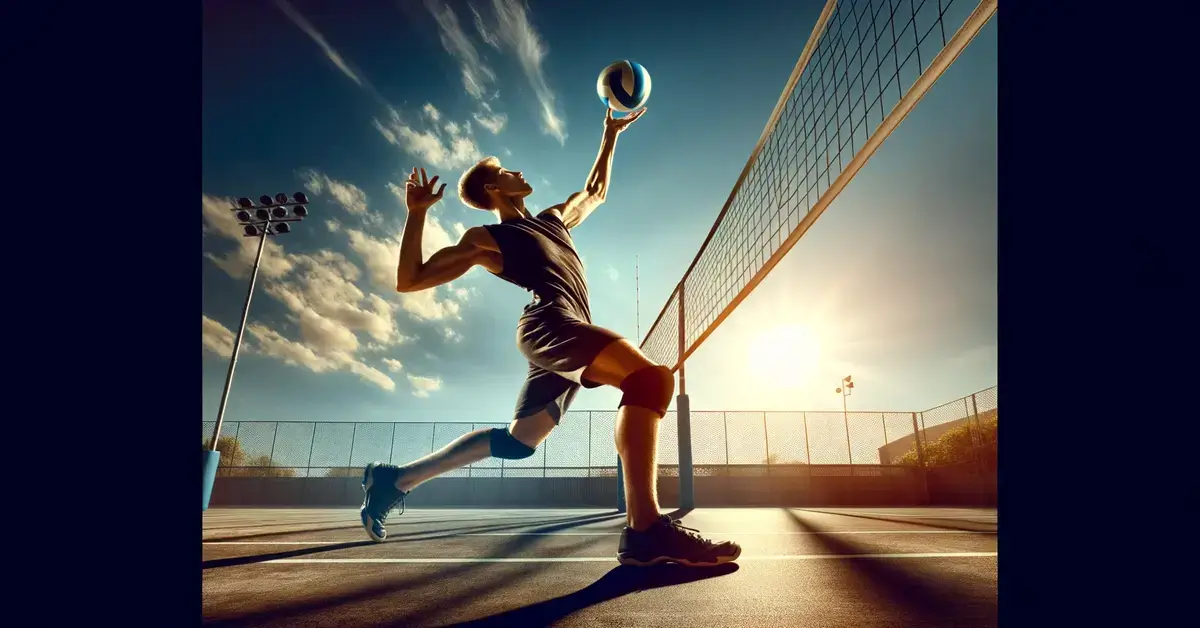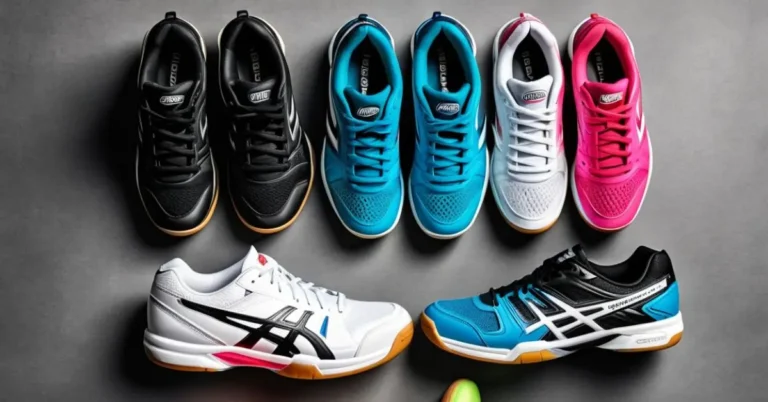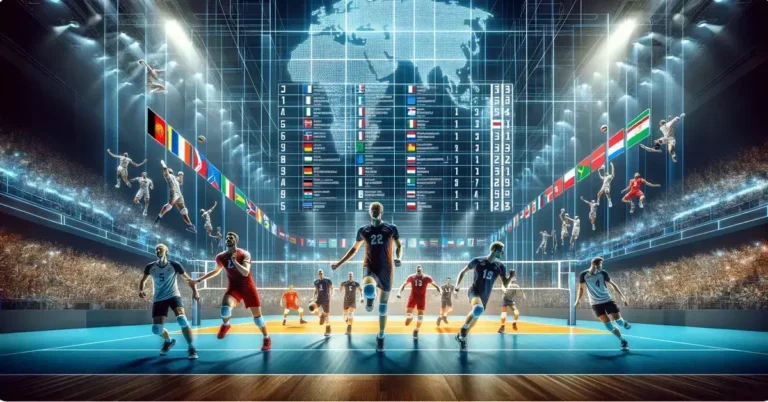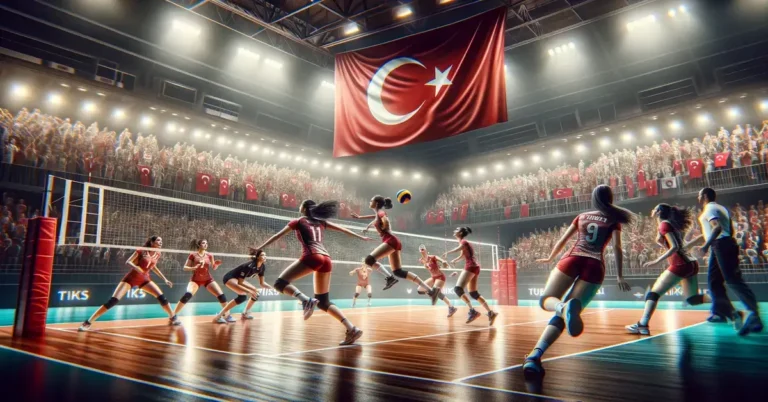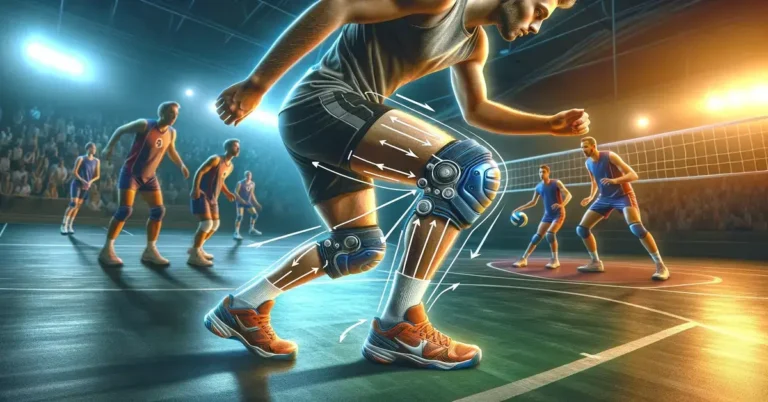I am pretty sure everyone knows how much drills can be annoying. Especially when you are unmotivated especially at the training day. But no one starts as expert from scratch on. Professional volleyball players have invested innumerable hours and days into various drills. You think, a jumping serve comes from nowhere? That’s absolutely not the case.
I fear not the man who has practiced 10,000 kicks once, but I fear the man who has practiced one kick 10,000 times.
Bruce Lee
I’ve collected the most valuable and helpful volleyball serving drills I already had the pleasure with. Have fun reading.
Basics of Volleyball Serving
Mastering volleyball serving drills is crucial for us to take our first confident step onto the court. Serving is the only skill in volleyball that’s totally within our control, and getting it right sets the tone for the entire game.
Understand the Serve
When we serve, we’re not just putting the ball into play; we’re actively trying to score points and put pressure on the opposition. It’s essential for us to grasp the mechanics of the serve – it’s the game’s opening gambit, and every player, from beginners to advanced, should hone this skill.
Types of Volleyball Serves
Volleyball has several types of serves, and it’s important for us to be familiar with each. The underhand serve is fundamental and a starting point for beginners. It’s performed with a pendulum arm swing, making it easier to control. The overhand serve can be more challenging, as it involves more complex arm swing mechanics and offers more power. Within overhand, there are two main types: the float serve, where the ball moves unpredictably in the air, and the jump serve, which adds an attack-like approach to serving with even more power and speed.
Serving Stance and Grip
For any serve, our stance and grip are pivotal. We should stand with feet shoulder-width apart, weight on the back foot, ready to shift forward as we serve. If we’re doing an underhand serve, we hold the ball in our non-dominant hand and strike it with a closed fist or open hand. For an overhand serve, we toss the ball with our non-dominant hand and hit it with the dominant hand, ideally contacting the ball with the heel of our palm to maximize power and control.
Fundamental Volleyball Serving Drills
We all know the thrill of acing a serve in volleyball—it can set the tone for the entire game. To get that winning edge, let’s dive right into some volleyball serving drills that focus on aim, accuracy, and consistency through repetition.
Wall Serving Practice
- Objective: Improve serving technique by using a wall as a target.
- Drill Setup:
- Find a solid wall with sufficient space.
- Stand approximately 10 feet away.
As we face the wall, we’re going to work on our serving form, ensuring each contact with the ball is purposeful. This serving volleyball drills for beginners exercise builds muscle memory, so our serves become consistently powerful during games.
Underhand Volleyball Serving Drills
- Objective: Master the basics of underhand serving with precision.
- Drill Steps:
- Adopt a balanced stance with the ball in the non-dominant hand.
- Swing the dominant hand underhand, striking the bottom of the ball.
- Aim for consistency in hitting a specific target area.
Our underhand serving drill is perfect for beginners to get a feel for the ball. It’s crucial to start simple: maintain a firm wrist, consistent contact point, and follow through towards our target area. This will create a solid foundation for more advanced volleyball serving drills.
Overhand Serve Drills
- Objective: Develop a strong overhand serve with targeted practice.
- Key Points:
- Toss is key; keep it in front of your hitting shoulder.
- Snap your wrist on contact for power and direction.

Now, let’s step up our game with the overhand serve drills. The key is to focus on a reliable toss and a forceful wrist snap at the point of contact. By constantly practicing our aim on precise spots on the court, we’ll gain the accuracy needed to challenge our opponents. Detailed progressions can be found in these overhand serving drill progressions.
Advanced Serving Techniques
When we hit the court for volleyball serving drills, we’re not just going through the motions; it’s about mastering precision, power, and finesse. Let’s dive into the techniques that can elevate our serves from good to ace-worthy.
Jump Serve Practice

The jump serve is a high-risk, high-reward play that brings both power and speed into the equation. To master this, we start behind the baseline, focusing on a consistent toss that’s high enough to give us time to approach and jump. The key is to hit the ball at the peak of our jump, creating a steep trajectory that’s hard to predict and defend. Practice this serve to enhance our dynamic in-game serves, and we’ll see our opponents struggle with the force and descent of our serves.
Float Serve Drills
A float serve is deceptive in its seeming simplicity, but it’s all about the no-spin motion, causing the ball to move unpredictably as it crosses the net. For these drills, work on a firm, flat contact with the ball. Altering our hand position and the point of contact can change the ball’s trajectory, making it difficult for the opponent to anticipate. Keep your arm swing fast but relaxed to maintain accuracy while still injecting enough power to send the ball sailing over the net.
Target Area Training
Drills that focus on target areas streamline our skills in aiming and precision. Set up zones on the court to represent ideal landing spots and serve repeatedly, aiming for these zones. It’s not just about power; it’s about placing the ball where it challenges the opposing team the most. Fine-tune your aim to turn our serves into strategic plays that can shift the momentum of the game.
Strategic Serve Placement
In volleyball, mastering strategic serve placement is a key component of effective volleyball serving drills. By targeting specific areas on the court, we apply pressure on the opponent and can significantly impact the rhythm of their game.
Serving to Corners
Serving to the corners is a precision skill that targets the least defended areas of the court. By directing our serve to these target areas, we make it difficult for the opponent to anticipate and return the ball with a strong formation. Think of each corner as a strategic point; hitting these areas consistently requires both control and power.
- Benefits:
- Forces the opponent to move more, potentially leading to errors.
- Opens up the middle of the court for subsequent plays.
Disrupting Opponent’s Formation
A well-placed serve can scatter the opponent’s planned formation. By serving into strategic zones, especially between players, we create confusion and hesitation, which can lead to a breakdown in communication on their side.
- Key serves:
- Short serves: Cause the opponents to rush forward, disrupting their positioning.
- Deep serves: Push the players back, potentially causing overlap or collisions.
By understanding and practicing these techniques, we heighten the effectiveness of our service game, adding a potent weapon to our volleyball arsenal.
Mental and Physical Preparation
When we talk about volleyball serving drills, it’s not just about arm strength—it’s about mastering the mental game and preparing our body to perform consistently. Proper preparation is as crucial as the drill itself. Let’s dive into some key areas.
Serving Under Pressure
In a volleyball game, pressure can make or break our serving ability. During our training sessions, it’s essential to simulate match-like conditions. We can set up volleyball serving drills where we aim to hit specific targets under a time limit or while our teammates provide distraction, cheering or clapping, to replicate the tension of a real game.
Consistency and Routine
Routine serves as the backbone of a consistent serve. We carve out time in every practice to develop a serving routine that gets us in the right headspace. From the way we line up to the ball to our serving stance, each step is repeated until it becomes second nature.
Conditioning for Better Serving
Enhancing our core strength is pivotal for adding power and stability to our serves. A mix of planks, medicine ball exercises, and targeted core workouts will fortify the muscles we rely on when serving. Integrating these into our regular training ensures we’re not just relying on mind play, but also on physical prowess.
FAQs
Serving can make or break the game in volleyball, so we’re always on the lookout for the best volleyball serving drills to up our game. Together, we’ll explore how to practice serves, strengthen them, execute the butterfly drill, and perfect our serve toss.
How do you practice volleyball serving?
To practice volleyball serving, it’s important to focus on consistent technique and accurate placement. Begin with stationary volleyball serving drills to get the feel of the ball. Then move on to serving from different positions on the court. We can use targets to improve accuracy and perform drills that simulate game-like conditions to increase pressure tolerance. A wall serve drill is a popular method for beginners to hone their skills.
How do you get a stronger serve in Volleyball?
Gaining a stronger serve in volleyball involves building upper body strength, particularly in the shoulders, and practicing the kinetic chain of movements involved in the serve. Power volleyball serving drills and serving progressions will train us to use our core, legs, and arms effectively. Consistency in practicing overhand serves and incorporating plyometric exercises into our training regimen can also contribute to a more powerful serve.
How to do the butterfly drill in volleyball?
The butterfly drill is designed to improve movement and serving under fatigue. To perform the drill:
1. Divide into two groups, one on each service line.
2. Players serve and then run to the opposite end of the court, assuming the position to receive a serve.
3. After receiving, they join the serving line at that end.
The continuous movement replicates match conditions, making the butterfly drill an effective way for us to improve serving stamina and accuracy.
How can I improve my serve toss in volleyball?
Improving the serve toss is crucial for a strong and consistent serve. We can practice by ensuring our toss is neither too high nor too low and by releasing the ball from the same spot every time. Techniques such as pointing to where we want the ball to go before tossing can establish consistency. Tossing the ball against a wall and catching it upon return without having to move helps refine our serve toss technique.
We hope you could find some valuable input about block drills for volleyball. We would be curious about your experience: How do your block drills for volleyball look like? How did you become a good blocker? Let us know in the comments.
If you liked this article I’m pretty sure you might want to dive a little bit deeper into our articles about drills.

